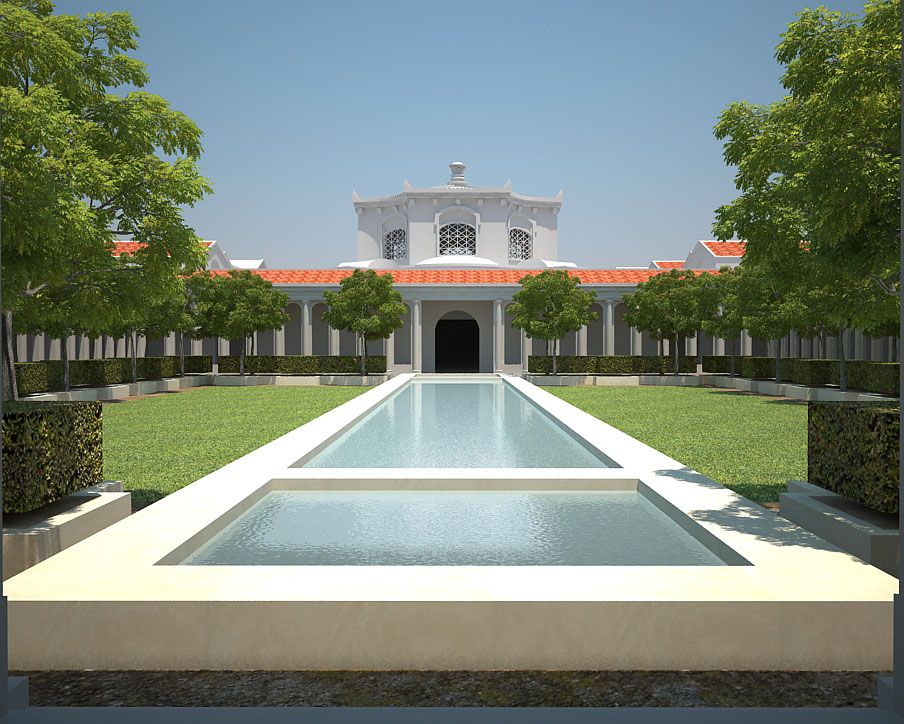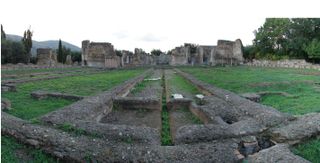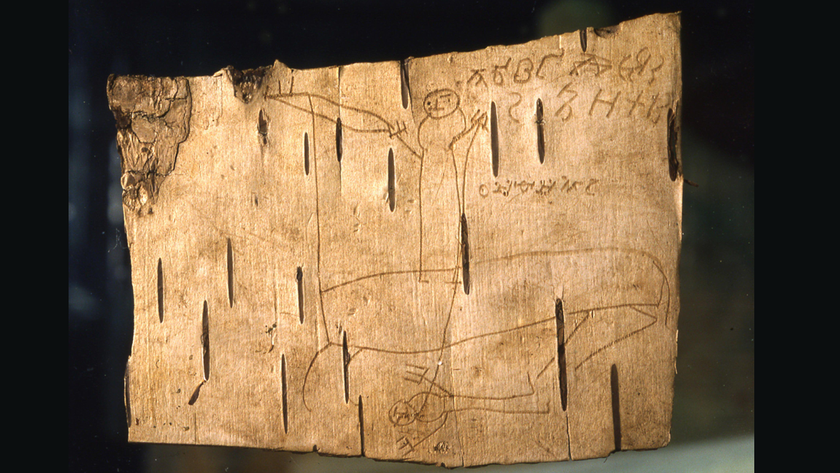Roman Emperor Hadrian's Villa Brought to Life with Gaming Software

In ruins today, Hadrian's Villa can only hint at its second-century glory. But a new digital archaeology project promises to transport computer users to the Roman emperor's opulent compound as it might have been nearly 2,000 years ago.
Five years in the making, the Digital Hadrian's Villa Project brings to life all 250 acres (101 hectares) of the estate in Tivoli, Italy, through 3D reconstructions and gaming software. The project launched Friday (Nov. 22), and the first of its 20 interactive Web players should be publicly available sometime before Thanksgiving (Nov. 28), said the project's leader Bernie Frischer of Indiana University.
The demo videos for these Web players sort of look like "The Sims," as they take advantage of a "virtual world" gaming platform. The software will allow users to tour the building complexes of Hadrian's Villa through an avatar of a historical figure such as a Roman senator, courtier or a slave, project researchers said. [See Images of Hadrian's Villa Reconstructed]
The project's genesis sounds something like a tale of artistic patronage in ancient Rome.
"I met a very wealthy person in the L.A.-area who loves Roman architecture and asked me if I could make a model of his favorite example of Roman architecture, which is Hadrian's Villa," Frischer said.
That donor gave Indiana University funds for the project, and Frischer started working on it in 2008. He was later supplemented by a grant from the National Science Foundation (NSF) and support from the Andrew W. Mellon Foundation.
Digital uncertainty
Sign up for the Live Science daily newsletter now
Get the world’s most fascinating discoveries delivered straight to your inbox.
Now designated as a UNESCO World Heritage Site, the villa was used a retreat by emperor Hadrian, who ruled from A.D. 117 to A.D. 138. Located about 20 miles (32 kilometers) east of Rome, the sprawling estate contained 30 building complexes, including palaces, temples, libraries, banquet halls and slaves' quarters, as well as some bizarre structures like the Maritime Theater, which, surrounded by a moat, contained Hadrian's private quarters. Researchers recently discovered an intricate network of underground passageways at Hadrian's Villa, which were likely traversed by thousands of slaves and merchants to keep the villa running smoothly.
Over the next 12 to 18 months, Frischer said his team would roll out Web players for 20 of the complexes at Hadrian's Villa, allowing users to explore digital reconstructions of the buildings based on scholarly research.
"The overall model reflects the thinking of experts who sign off on the models when they're done," Frischer told LiveScience.

But ruins aren't always generous. Sometimes archaeologists must interpret an entire complex based on what's left of its foundations. That was the case with the Sanctuary of Antinous, or Antinoeion, which honored Hadrian's male teenage lover Antinous who was deified after he drowned in the Nile in A.D. 130.
Frischer said the foundations are all that survive of the three-building Antinoeion. He based his model of the site on the interpretation by Zaccaria Mari, an archaeologist who excavated the sanctuary.
"Our reconstruction reflects exactly his vision of how it looks," Frischer said. According to Mari's interpretation, an obelisk dedicated to Antinous that now decorates Pincian Hill in Rome, would have originally stood in the middle of the sanctuary's plaza. Some scholars have, however, disputed this, arguing that there would not have been an obelisk in the Antinoeion, or that there was an obelisk, but not the one now on Pincian Hill.
"In this field of virtual heritage … one of the perennial problems we confront is uncertainty," Fischer told LiveScience. "There's always disagreement and there's always an absence of evidence."
The project also makes publicly available its "paradata" to be transparent about what academic research influenced each part of the reconstruction, Frischer said. He likened these bits of information to the footnotes in scholarly print publications.
Shadows on the ruins
Merging scholarly data into gaming software isn't intended to be used only by virtual tourists and history buffs. Frischer says scholars also might use his Web players to make discoveries.
A solar tracker plug-in can be added to the player. This feature uses astronomy data from NASA to show where sunlight would have fallen on any given time and day in history. Frischer said scholars are becoming increasingly aware of the importance of solar alignments in Roman architecture, giving the example of Rome's Pantheon, which was built under Hadrian. [The 7 Most Mysterious Archaeological Finds on Earth]
"Recent work has shown that there is a major solar alignment on April 21," the day Romans celebrated as the anniversary of their city's founding, Frischer said. "The sunlight goes through the big opening of the dome in the Pantheon and illuminates the door at exactly Noon on April 21."
Running this solar tracker on his reconstruction has already revealed some interesting alignments. For example, on New Years Day in the Egyptian calendar — July 20 — the obelisk at the Antinoeion would have cast a shadow squarely down the center of Osiris-Antinous temple. (After his death, Antinous had been associated with the Egyptian god of the underworld, Osiris.) Frischer said Mari was "flabbergasted" to learn about this alignment.
Frischer said he is looking for a commercial partner or foundation to help apply the gaming software to another one of his projects, Rome Reborn, which created 3D models of ancient Rome.
Check back on the website of the Digital Hadrian's Villa Project to download the first Web player when it becomes available.
Follow Megan Gannon on Twitter and Google+. Follow us @livescience, Facebook & Google+. Original article on LiveScience.












